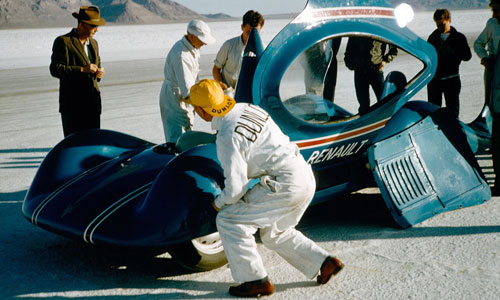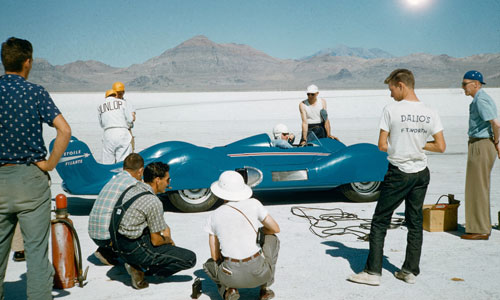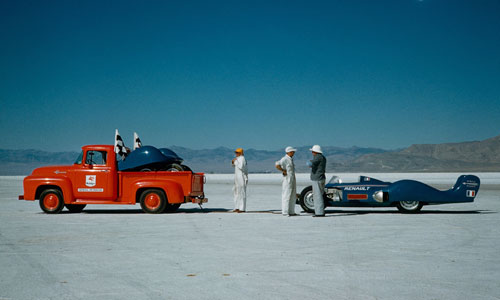


L’Etoile Filante, the car from Renault Industries who won 4 world records in 1956, and won the fastest land speed record on the Bonneville Salt Flats at 308.85 km/h, is back after 60 years on the Flats for display. The Renault team will run another car the “Dauphine”. The Dauphine is also a 1956 Model, reshaped for racing on the Flats at this year Speed Week. The Dauphine was originally commercialised for the US market.
September 5, 1956. The whistle of a turbine echoes across the Bonneville Salt Flats in Utah, USA. The sound issues from a singular-looking blue vehicle, Renault’s Etoile Filante (Shooting Star). Developer Jean Hébert took to the wheel for the vehicle’s first outdoor run, after two years of wind-tunnel testing. Several minutes later the Etoile Filante set the new land speed record, peaking at 308.85 km/h. Read on as we look back at the history of the experimental car – the Renault missile that proved the world’s fastest car!

The aeronautic sector expanded rapidly after the Second World War. Joseph Szydlowski, head of Turboméca, the renowned turbine engine manufacturer, started the small-scale production of powerful turbine engines, fitted notably on the famous Alouette helicopters. He soon joined forces with La Régie Renault, which was looking for new techniques for its engines. Renault chief Pierre Lefaucheux had also set his sights on beating the world land speed record. The project got off the ground in 1954, led by three experienced professionals: Fernand Picard, head of research; Albert Lory, the illustrious engine developer; and Jean Hébert, engineer and driver. The trio designed an outstanding vehicle powered by an ultra-powerful turbine engine developing 270 hp at 28,000 rpm. The Étoile Filante featured a tubular, polyester-clad body and two large aircraft-like fins. It was equipped with the Transfluide transmission that would later be used on the Frégates. In a nod to the aeronautics sector, it ran on kerosene and was practically vibration-free thanks to the rotation speed of the turbines.


